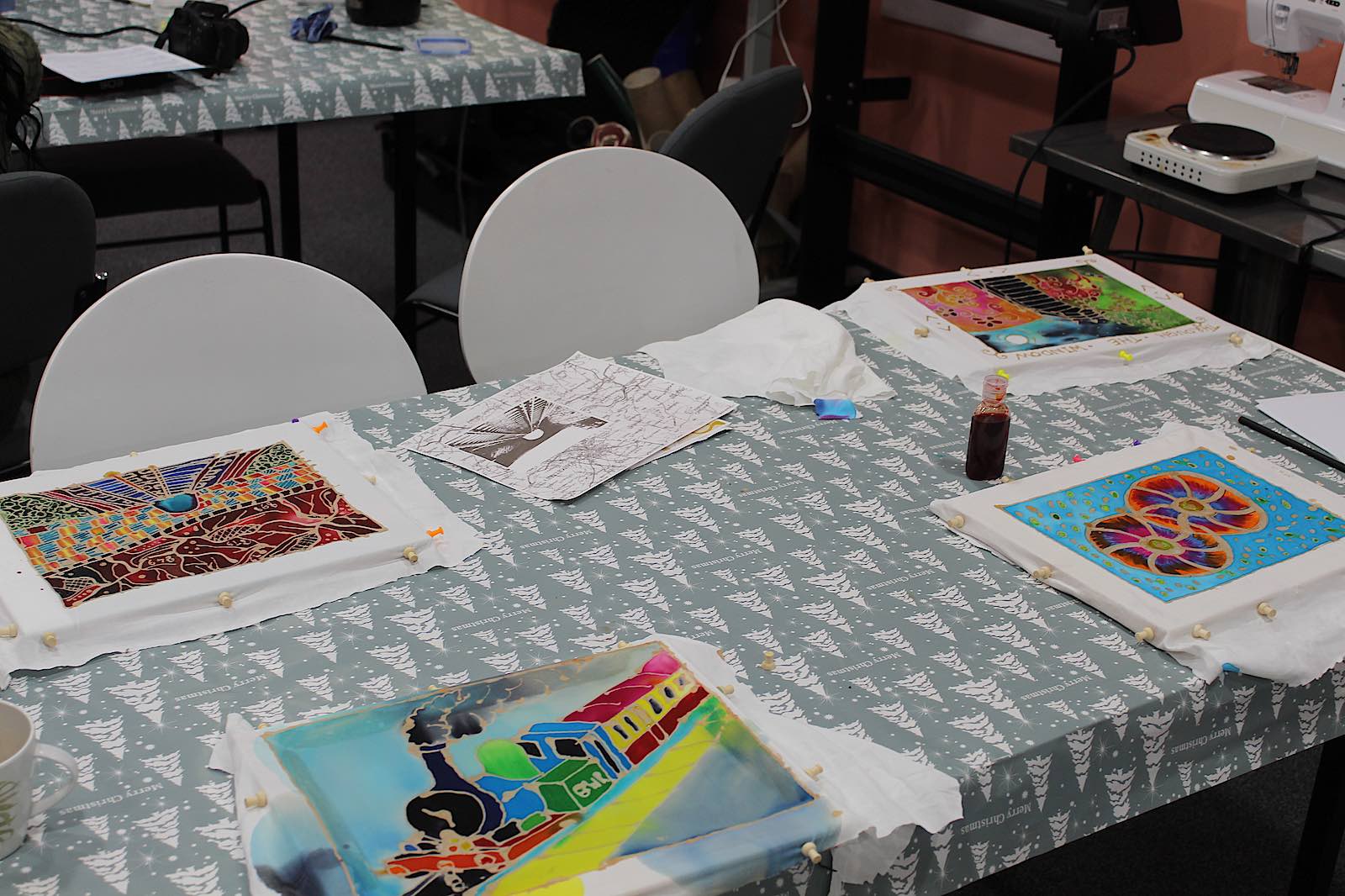
The Great Train Tapestry batik workshop by Zariq
As Phase II of the Great Train Tapestry continues on, we’re looking back on the making sessions that have taken place so far. Our first sessions included batik workshops facilitated by Zariq Rosita-Hanif.
With Zariq’s expert guidance, participants were given the opportunity to explore the distinctive technique of batik. Using a tool called a tjanting or canting (a spouted utensil which can apply molten wax precisely), the group created tapestry panels inspired by themes including transport, travel, women, textile crafts, and the rail industry. The result was a selection of intricate and expressive designs, with flowing linework and beautiful colours.
Batik is a method of decorating fabrics through the application of hot wax and dyes. In this process, selected areas of a design are blocked out in molten wax; this acts as a resist to dyes which are then applied on top. There are a variety of approaches to this technique: for example, one might use a tjanting to draw wax designs directly onto fabric. Alternatively, one might instead use a copper stamp known as a cap to print designs. The fabrics can be coloured either by dipping into dyes or painting the dyes directly. After being dyed, the wax is removed, revealing the final design. Batik is usually produced on fabric surfaces, such as cotton, silk or linen; however, certain batik techniques can also be used on paper, wood, leather and some ceramics. The origins of batik are ancient and traced back to Java, Indonesia; it remains a craft of great cultural importance. Batik also possesses great historical significance in numerous other countries including Malaysia, India, Sri Lanka, and China.
Zariq Rosita-Hanif is an autodidact folk art artist originally from Malaysia. In her own words: “my inspirations are always hailed from my surroundings. While I’m exploring British cultural and natural heritage, I practice some of Malaysian traditional art forms such as Batik and Wayang Kulit (shadow puppets) to stay in touch with my heritage creating juxtapositions and fusion work. Sometimes, I combine those elements in my mixed-media illustration work with a hint of Malaysian folk art style. Currently, I’m working on incorporating more sustainable elements into my work by using recyclable materials”.
A subsequent batik workshop for the Great Train Tapestry was held by Zariq on 8th December. Here, participants were once again able to explore the eye-catching intricacies of the batik process, creating pieces vibrant in colour and rich in storytelling capabilities. We look forward to future collaborations with Zariq and to seeing more of her creations!
Zariq’s work can be found on Instagram @batikshire.
Are you interested in contributing to the creation of panels for the Great Train Tapestry? We have several upcoming open access sessions, all free to attend and open to women / non binary identities, which can be viewed on Eventbrite and our dedicated tapestry page*!










